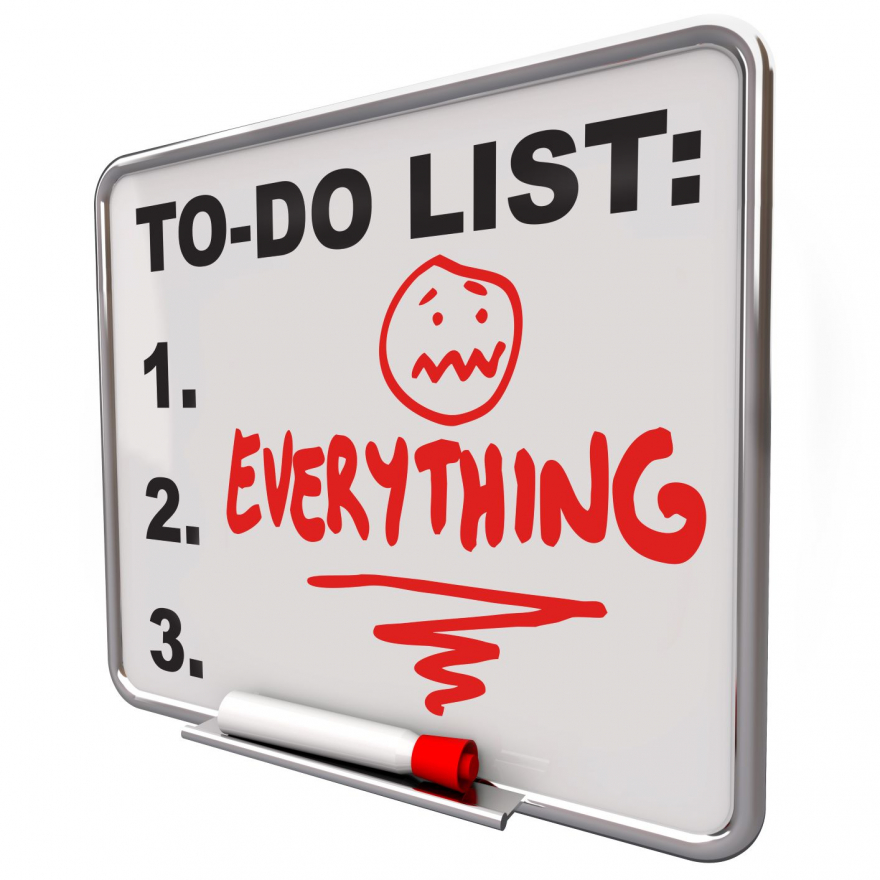PERSONAL NOTE
Uncertainty, rapid change, unrest; it can all be overwhelming. I'd love to tell you that I just got back from a leisurely vacation but that only happened in my mind. I am flexing with the times like everyone else, changing now I do business and how I connect with people.
Each month I want to give you something to help you navigate through life and in particular 2020. This month I thought the topic of overwhelm would be appropriate. Please feel free to forward this email to anyone you think would find it useful.
ARTICLE
Overcoming Overwhelm by Jan Cerasaro
Look in any thesaurus, and the synonyms for overwhelm are pretty awful: overpower, subdue, oppress, quash, engulf, swallow, submerge, bury, suffocate.
Groan.
To anyone who’s experienced overwhelm, and that’s plenty of us, those words may be all too familiar. Whether the overwhelm is sudden or cumulative, chronic or acute, the feeling is one of drowning, immobility and powerlessness.
During those times, everything feels too big. It’s not just everyday busyness and packed schedules, now as an added bonus we have COVID-19 and civil unrest. When we’re overwhelmed, making dinner becomes a monumental effort. Better eat out. Bills, housework? Forget it. Tasks that used to take only 10 or 15 minutes now seem utterly impossible. There seems to be no time for anything. So we do nothing.
Worse, we have no faith that this, too, shall pass. We seem hopelessly mired in the quicksand of “too much.” We keep trying to will our way out of the quicksand with a will that just wants to lie down. We live in a very overwhelming time—much more so than in decades past, says Jan Boddie, Ph.D., a California therapist who trains individuals and consults with businesses on the topic.
Things are speeding up. Technology’s well-touted time saving seems to have yielded less leisure time, not more. Companies are demanding longer work hours. Many adults are sandwiched between the needs of older and younger generations.
“We have really lost connection, not just with nature, but with our own true human nature,” Boddie says. “We’re sidetracked. Our lives are in such fast forward that we don’t even recognize we might need help until we’re drowning.”
Part of the problem is the cultural belief system in place, one that overrates doing and achievement and underrates quality of experience and connection with values.
 In that cultural mindset, it’s not uncommon for a friend or a magazine article, with all good intention, to suggest the “Nike solution”: Just do it. Make priorities. Choose three things and accomplish them quickly. Go through the mail as soon as it arrives. Do a “brain dump” and create a huge to-do list with everything that you can think of on it. Now get started! In that cultural mindset, it’s not uncommon for a friend or a magazine article, with all good intention, to suggest the “Nike solution”: Just do it. Make priorities. Choose three things and accomplish them quickly. Go through the mail as soon as it arrives. Do a “brain dump” and create a huge to-do list with everything that you can think of on it. Now get started!
Not bad suggestions necessarily, but overcoming overwhelm isn’t really about measuring accomplishment. It’s about connecting with what has meaning for us, with what feeds and enlivens us.
“Putting on a whole new sense of doing-ness is overwhelming,” Boddie says. “It creates a future-based state of mind that never ends because there will always be more to do. Being in relationship with what has meaning is fulfilling in the here and now. Feeling connected then connects us to the natural fuel for getting things done.”
Thus, when we come into alignment with our values and needs, we find the inner resources and spaciousness needed to get on with life.
First, however, we need to identify our individual symptoms and triggers for overwhelm. Our symptoms can be physical (e.g., nail biting, clumsiness, neck ache); psychological (forgetful, rude, defensive); social (poor hygiene, inadequate boundaries); or spiritual (loss of sense of purpose, unsure of what’s important).
Triggers are just as individual: a deadline, a certain tone of voice, change.
Noticing these symptoms and triggers is like setting off the two-minute warning buzzer: time for intervention techniques. And after we’ve come back to ourselves, it’s time for prevention techniques, such as adequate rest, nutrition, exercise and, as always, connection to purpose.
“The focus that matters is in your heart,” Boddie says. “Connect with yourself and then that self can do the tasks.”
Author’s content used under license, © 2008 Claire Communications
COOL RESOURCE
For your mobile device there is a great app called The Tapping Solution. Tapping which is also called EFT (Emotional Freedom Technique) is a very simple process of lightly tapping on meridian points of the body while making statements of something you want to change and desired outcomes. It uses concepts from acupressure, neuro linguistic programming and energy work. If you have never experienced this it is a very gentle and effective way to make changes and reduce stress. I use this app everyday! Many of the programs are free and they have several videos showing you and explaining exactly what to do. This is a great app if you want to get back into tapping or just want to check it out.
I give this app 5 stars!
CONNECT WITH ME
Facebook: https://www.facebook.com/jan-cerasaro-your-stress-reduction-coach-111673727145447
Linked In: https://www.linkedin.com/in/jan-cerasaro-48x7/
Please let me know if there are particular items you would like me to cover in upcoming newsletters. Just email me at jancerasaro@yccbe.com
Stay safe, healthy and happy!
Coach Jan
|